Growing Strawberries at Home – imagine plucking juicy, sun-ripened strawberries straight from your own garden! It’s a dream many of us share, and trust me, it’s totally achievable, even if you think you don’t have a green thumb. For centuries, strawberries have been cherished, not just for their delicious taste, but also for their vibrant color and the joy they bring to gardens around the world. Did you know that wild strawberries were enjoyed by the Romans? Talk about a timeless treat!
But let’s be honest, sometimes the idea of gardening feels overwhelming. We’re all busy, and the thought of battling pests, dealing with complicated instructions, and ending up with nothing to show for it can be discouraging. That’s where these simple, effective DIY tricks come in. I’m going to share some of my favorite hacks for growing strawberries at home that will make the process easier, more rewarding, and way less intimidating.
Whether you have a sprawling backyard or just a sunny balcony, these tips will help you cultivate a thriving strawberry patch. Get ready to enjoy the sweet taste of success – and a whole lot of delicious strawberries!
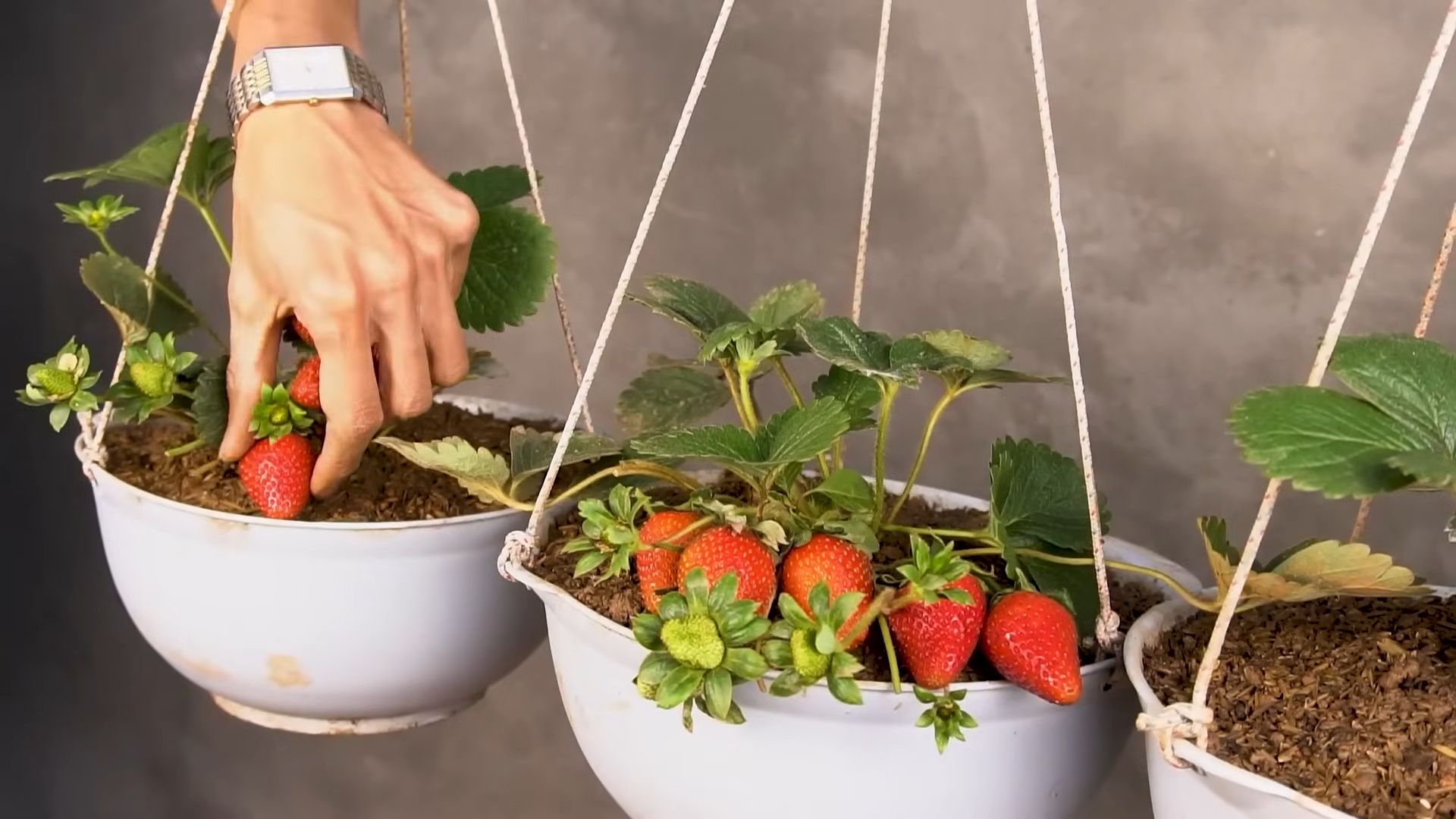
Growing Strawberries at Home: A Beginner’s Guide
Hey there, fellow gardening enthusiasts! Ever dreamt of plucking juicy, red strawberries straight from your own backyard? Well, dream no more! Growing strawberries at home is surprisingly easy and rewarding. I’m going to walk you through everything you need to know, from choosing the right variety to harvesting your delicious bounty. Let’s get started!
Choosing Your Strawberry Variety
Before you even think about planting, you need to decide which type of strawberry is right for you. There are three main types:
* June-Bearing: These strawberries produce one large crop, usually in late spring or early summer (hence the name!). They’re great if you want a big batch for jam-making or freezing.
* Everbearing: Don’t let the name fool you; everbearing strawberries don’t produce fruit continuously. Instead, they have two or three harvests throughout the growing season – one in spring, one in late summer/early fall, and sometimes a smaller one in between.
* Day-Neutral: These are the most consistent producers, yielding fruit throughout the growing season as long as the temperature is between 35°F and 85°F. They’re a good choice if you want a steady supply of strawberries for snacking.
Consider your climate, available space, and desired harvest schedule when making your decision. I personally love day-neutral varieties because I enjoy having fresh strawberries all summer long!
Preparing Your Planting Area
Strawberries need plenty of sunlight and well-drained soil. Here’s how to get your planting area ready:
1. Choose a Sunny Spot: Strawberries need at least 6-8 hours of direct sunlight per day. The more sun, the better the fruit production.
2. Test Your Soil: Strawberries prefer slightly acidic soil with a pH between 5.5 and 6.8. You can buy a soil testing kit at most garden centers. If your soil is too alkaline, you can amend it with sulfur or peat moss.
3. Improve Drainage: Strawberries hate soggy feet! If your soil is heavy clay, amend it with plenty of organic matter, such as compost, well-rotted manure, or peat moss. This will improve drainage and aeration.
4. Remove Weeds: Clear the planting area of all weeds and grass. Weeds compete with strawberries for nutrients and water, so it’s important to get rid of them before planting. I like to use a hoe or hand-pull them. You can also use a garden fork to loosen the soil and make it easier to remove the weeds.
5. Add Fertilizer: Strawberries are heavy feeders, so it’s a good idea to incorporate some fertilizer into the soil before planting. Use a balanced fertilizer with an N-P-K ratio of 10-10-10 or 12-12-12. Follow the instructions on the fertilizer package for application rates.
Planting Your Strawberries
Now for the fun part! Here’s how to plant your strawberry plants:
1. Choose Your Planting Method: You can plant strawberries in raised beds, containers, or directly in the ground. Raised beds are great for improving drainage, while containers are ideal for small spaces.
2. Space Your Plants: Space June-bearing strawberries 18-24 inches apart in rows that are 3-4 feet apart. Everbearing and day-neutral strawberries can be planted closer together, about 12 inches apart.
3. Dig Your Holes: Dig holes that are large enough to accommodate the root ball of your strawberry plants.
4. Plant Carefully: Gently remove the strawberry plants from their containers and loosen the roots. Place the plants in the holes, making sure that the crown (the point where the roots meet the stem) is level with the soil surface. Don’t bury the crown, as this can cause the plant to rot.
5. Backfill and Water: Backfill the holes with soil and gently firm the soil around the plants. Water thoroughly after planting.
Caring for Your Strawberry Plants
Once your strawberries are planted, it’s important to provide them with proper care to ensure a bountiful harvest.
1. Water Regularly: Strawberries need consistent moisture, especially during fruit development. Water deeply whenever the top inch of soil feels dry. Avoid overhead watering, as this can promote fungal diseases. Drip irrigation or soaker hoses are ideal.
2. Fertilize Regularly: Fertilize your strawberry plants every 4-6 weeks with a balanced fertilizer. Follow the instructions on the fertilizer package for application rates. I like to use a liquid fertilizer diluted in water for easy application.
3. Mulch Your Plants: Mulching helps to retain moisture, suppress weeds, and keep the berries clean. Use organic mulch, such as straw, pine needles, or wood chips. Apply a 2-3 inch layer of mulch around the plants.
4. Remove Runners: June-bearing strawberries produce runners, which are long stems that grow out from the main plant and develop new plantlets. If you want to maximize fruit production, remove the runners as they appear. Everbearing and day-neutral strawberries also produce runners, but you can let them grow if you want to propagate new plants.
5. Protect from Pests and Diseases: Strawberries can be susceptible to various pests and diseases, such as slugs, snails, aphids, and fungal diseases. Inspect your plants regularly for signs of problems and take action promptly. You can use organic pest control methods, such as insecticidal soap or neem oil, to control pests. For fungal diseases, ensure good air circulation and avoid overhead watering.
6. Netting: Birds love strawberries just as much as we do! To protect your crop, cover your plants with netting when the berries start to ripen. You can find bird netting at most garden centers.
Harvesting Your Strawberries
The moment you’ve been waiting for! Here’s how to harvest your strawberries:
1. Wait for Ripeness: Strawberries are ready to harvest when they are fully red and slightly soft to the touch. They should also detach easily from the plant.
2. Harvest Carefully: Gently grasp the stem of the strawberry and twist or snip it off the plant. Avoid pulling the berries, as this can damage the plant.
3. Harvest Regularly: Harvest your strawberries every few days as they ripen. This will encourage the plants to produce more fruit.
4. Enjoy Your Harvest: Eat your strawberries fresh, use them in desserts, make jam, or freeze them for later. The possibilities are endless!
Overwintering Your Strawberry Plants
In colder climates, it’s important to protect your strawberry plants from the winter cold.
1. Clean Up the Plants: After the growing season is over, remove any dead or diseased leaves and stems from your strawberry plants.
2. Mulch Heavily: Apply a thick layer of mulch, such as straw or pine needles, around the plants to insulate them from the cold.
3. Water Sparingly: Water your strawberry plants sparingly during the winter months, only when the soil is very dry.
4. Remove Mulch in Spring: In the spring, remove the mulch as soon as the weather starts to warm up. This will allow the plants to get more sunlight and air circulation.
Troubleshooting Common Problems
Even with the best care, you may encounter some problems when growing strawberries. Here are some common issues and how to address them:
* Small Berries: Small berries can be caused by a lack of water, nutrients, or sunlight. Make sure your plants are getting enough of all three.
* Rotting Berries: Rotting berries can be caused by fungal diseases or pests. Ensure good air circulation and control pests promptly.
* No Berries: No berries can be caused by a lack of pollination, cold temperatures, or poor soil. Make sure your plants are getting enough sunlight and water, and that the soil is well-drained. You can also try hand-pollinating the flowers with a small brush.
* Pests: Keep an eye out for common pests like slugs, snails, and aphids. Use organic pest control methods to keep them at bay.
Growing Strawberries in Containers
Don’t have a garden? No problem! You can easily grow strawberries in containers.
1. Choose the Right Container: Select a container that is at least 12 inches in diameter and 8 inches deep. Make sure the container has drainage holes.
2. Use a Good Potting Mix: Use a high-quality potting mix that is well-draining. Avoid using garden soil, as it can become compacted in containers.
3. Plant Your Strawberries: Plant your strawberry plants in the container, following the same instructions as for planting in the ground.
4. Water and Fertilize Regularly: Water your container-grown strawberries regularly, as they will dry out more quickly than plants in the ground. Fertilize them every 2-4 weeks with a liquid fertilizer.
5.
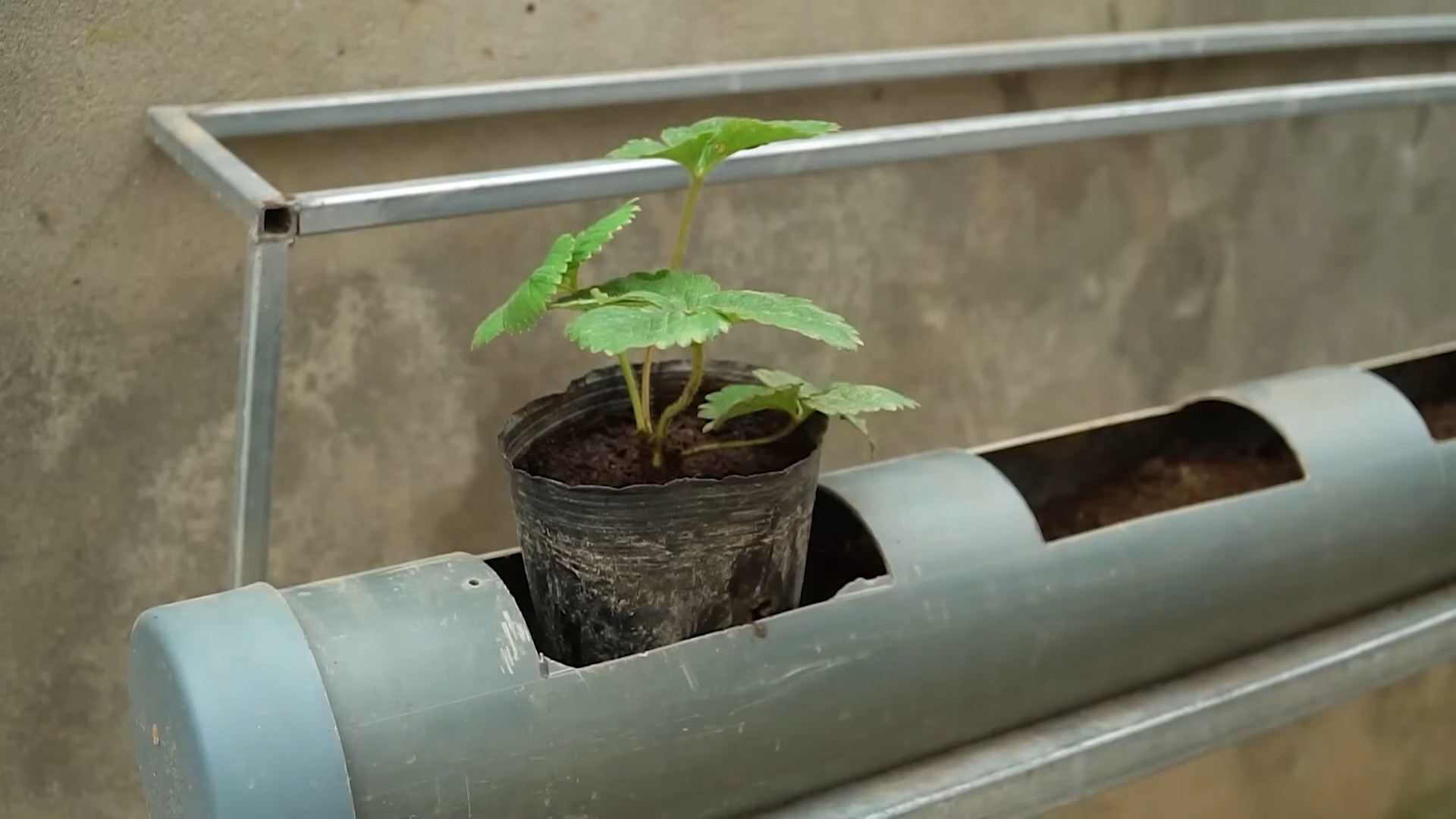
Conclusion
So, there you have it! Growing strawberries at home, especially using our simple DIY trick, is not just a gardening project; it’s an investment in fresh, flavorful, and healthy eating. Forget those bland, store-bought berries that lack the vibrant taste of sunshine and homegrown goodness. With a little effort and our easy-to-follow method, you can transform your balcony, patio, or garden into a thriving strawberry patch, bursting with juicy, red jewels.
Why is this DIY approach a must-try? Because it simplifies the process, making it accessible to even the most novice gardener. It maximizes space, allowing you to grow a significant number of plants in a relatively small area. And most importantly, it puts you in control of what goes into your food. You can choose organic methods, avoiding harmful pesticides and herbicides, ensuring that your family enjoys the purest, most wholesome strawberries possible.
But the fun doesn’t stop there! Feel free to experiment with different strawberry varieties. Everbearing strawberries will provide you with fruit throughout the growing season, while June-bearing varieties offer a concentrated harvest, perfect for making jams and preserves. You can also try growing strawberries in hanging baskets or vertical planters for an even more visually appealing and space-saving display. Consider companion planting with herbs like basil or thyme, which can help deter pests and enhance the flavor of your strawberries.
Don’t be afraid to get creative! Perhaps you’ll discover a new and improved method for growing strawberries at home. The possibilities are endless.
We wholeheartedly encourage you to give this DIY trick a try. It’s a rewarding experience that will connect you with nature and provide you with a delicious and healthy treat. Imagine the satisfaction of picking your own sun-ripened strawberries and sharing them with your loved ones. It’s a taste of summer that you can enjoy right in your own backyard.
Once you’ve embarked on your strawberry-growing adventure, we’d love to hear about your experience! Share your tips, tricks, and triumphs in the comments below. Let’s build a community of strawberry enthusiasts, sharing our knowledge and inspiring others to grow their own food. Together, we can cultivate a healthier and more sustainable future, one strawberry plant at a time. So, grab your gardening gloves, gather your supplies, and get ready to enjoy the sweet taste of success!
Frequently Asked Questions (FAQ)
What is the best time of year to start growing strawberries?
The best time to plant strawberries depends on your climate and the type of strawberry you’re growing. In general, early spring or late fall are ideal. For June-bearing varieties, planting in early spring allows them to establish themselves before the heat of summer. Everbearing and day-neutral varieties can be planted in either early spring or late summer/early fall. Planting in the fall allows the plants to develop a strong root system before winter, leading to a more abundant harvest the following spring. However, be sure to protect them from frost during the colder months. Check your local climate and consult with your local nursery for the most accurate advice.
What kind of soil is best for growing strawberries?
Strawberries thrive in well-drained, slightly acidic soil with a pH between 5.5 and 6.5. The soil should be rich in organic matter. Before planting, amend your soil with compost, well-rotted manure, or other organic amendments to improve drainage and fertility. Avoid heavy clay soils, as they can retain too much water and lead to root rot. If you have clay soil, consider growing your strawberries in raised beds or containers with a suitable potting mix. A soil test can help you determine the pH and nutrient levels of your soil and guide you in making the necessary amendments.
How much sunlight do strawberries need?
Strawberries need at least 6-8 hours of direct sunlight per day to produce a good crop of fruit. Choose a location that receives full sun for the majority of the day. If you live in a hot climate, some afternoon shade can be beneficial to prevent the plants from overheating. Insufficient sunlight can result in smaller berries and a reduced yield.
How often should I water my strawberry plants?
Water your strawberry plants regularly, especially during dry periods. The soil should be kept consistently moist, but not waterlogged. Water deeply and less frequently, rather than shallowly and more often. This encourages the roots to grow deeper, making the plants more drought-tolerant. Avoid overhead watering, as this can promote fungal diseases. Drip irrigation or soaker hoses are the best methods for watering strawberries. Check the soil moisture regularly by sticking your finger into the soil. If the top inch feels dry, it’s time to water.
What are some common pests and diseases that affect strawberries, and how can I control them?
Strawberries can be susceptible to various pests and diseases, including slugs, snails, aphids, spider mites, gray mold, and leaf spot. To prevent problems, choose disease-resistant varieties, provide good air circulation, and avoid overhead watering. Regularly inspect your plants for signs of pests or diseases. Handpick slugs and snails, and use insecticidal soap or neem oil to control aphids and spider mites. For fungal diseases, use a copper-based fungicide or other appropriate treatment. Companion planting with herbs like basil or thyme can also help deter pests.
How do I fertilize my strawberry plants?
Fertilize your strawberry plants in early spring, after they have finished their initial flush of growth. Use a balanced fertilizer specifically formulated for berries, or a general-purpose fertilizer with an NPK ratio of 10-10-10. Follow the instructions on the fertilizer package carefully. Avoid over-fertilizing, as this can lead to excessive foliage growth and reduced fruit production. You can also amend the soil with compost or other organic matter throughout the growing season to provide a slow-release source of nutrients.
How do I protect my strawberries from birds and other animals?
Birds and other animals, such as squirrels and chipmunks, can be a major problem for strawberry growers. To protect your berries, cover your plants with netting or bird netting. You can also use scarecrows, reflective tape, or other deterrents to keep animals away. Be sure to secure the netting properly to prevent animals from getting trapped.
How do I overwinter my strawberry plants?
In colder climates, strawberry plants need to be protected during the winter months. After the first frost, mulch your plants with straw, pine needles, or other organic material to insulate the roots and protect them from freezing temperatures. In very cold climates, you may need to cover the plants with a row cover or other protective material. Remove the mulch in early spring, after the danger of frost has passed.
How long does it take for strawberry plants to produce fruit?
The time it takes for strawberry plants to produce fruit depends on the variety and the planting time. June-bearing varieties typically produce fruit the following spring after planting. Everbearing and day-neutral varieties may produce some fruit in the first year, but the main harvest will be in the second year. Be patient and provide your plants with proper care, and you will be rewarded with a bountiful harvest of delicious strawberries.
Can I grow strawberries in containers?
Yes, strawberries grow very well in containers. Choose a container that is at least 12 inches in diameter and has good drainage. Use a high-quality potting mix and water regularly. Container-grown strawberries may need to be fertilized more frequently than those grown in the ground. You can also move the containers to a sheltered location during the winter months to protect the plants from extreme cold.

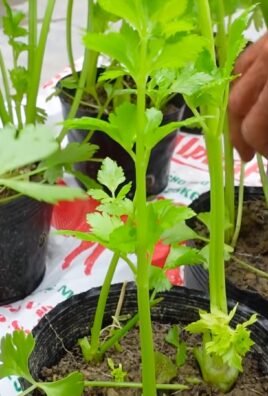
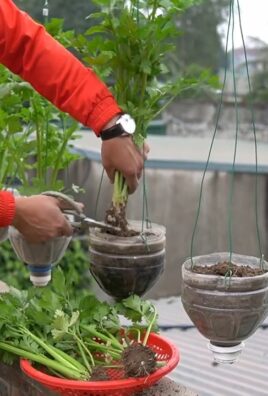
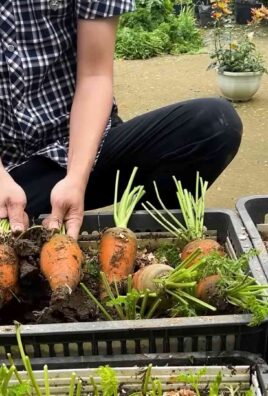
Leave a Comment